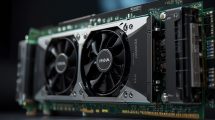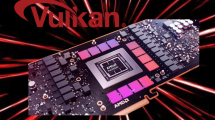Let’s now look at the gaming performance in 720p, i.e. a resolution with 1280 x 720 pixels and Far Cry 6. Sure, no one plays that way, of course, but it’s at least a theoretical chance to work out differences and do various experiments on the “what if” principle. After all, we primarily want to benchmark the CPUs and not the graphics cards (ok, those too now, unfortunately). Incidentally, the picture looks very similar under 1080p, i.e. at 1920 x 1080 pixels, so I’ll give myself a break now. And no, the Ryzen 7 5800X3D isn’t included here yet, but it fits in analogously, I can already spoil that with. Although clearly further ahead…
The whole thing can also be tracked quite well with the FPS curves;
But the percentiles are always such a thing. The so-called P1 (1% Low) represents the 1% of the slowest FPS and is thus the image for the new min FPS. But there are other percentiles that fall within the visible range. Exactly for this I also have the well-known graphic, which shows very well what percentage total share more than 50% of all rendered frames have in the respective FPS stages of the Y-axis. I can’t really understand why no one but me analyzes this, because even the values at 85% (P15) and 95% (P5) are still relevant for smooth scrolling.
This brings us to the smaller intervals, the frame times. Unfortunately, the respective curves overlap, but I still have the course for each individual card as a separate graphic in direct comparison to the graphics card’s power consumption later. But first, the tangle of frame times for all CPUs and cards:
But there is also a good workaround as a clearer bar chart with the percentages of render times. So quasi something like the percentiles, only for the frames and no rough seconds. Alder Lake clearly has the edge there. And even though the GeForce outputs more FPS in the Ryzen CPUs, the Radeon is again just ahead in the frame times.
But there is another factor that strongly influences our eye and well-being, the variances. The issue here is the directly successive frames and their possibly very different render times. 100 FPS can consist of 100 normally rendered frames or 50 very fast and 50 very slow rendered frames, always nicely alternating. The FPS and percentiles as a very rough interval do not care at all, but unfortunately the eye does. The whole thing is also known as micro jerks, which everyone finds annoying in a different way. You can see very clearly in the chart that the Ryzen CPUs are rather at a disadvantage. In this game, mind you. The counterattack of the new CPU will take place tomorrow.

































84 Antworten
Kommentar
Lade neue Kommentare
Urgestein
Urgestein
Mitglied
Mitglied
1
Urgestein
Urgestein
Urgestein
1
Urgestein
Mitglied
Urgestein
Urgestein
Urgestein
Veteran
Urgestein
Urgestein
1
Veteran
Alle Kommentare lesen unter igor´sLAB Community →